12 min read
Beyond Traditional Loans: 14 Creative Financing Options for Real Estate Investing
Creative financing can offer real estate investors options beyond traditional lending from banks. If you have less-than-ideal credit or lack a sizeable...

TurboTenant teamed up with Lula, an award-winning maintenance management solution, to provide you with Maintenance Plus! Currently available in select markets, Maintenance Plus will automate your maintenance requests from start to finish.
TurboTenant teamed up with Lula, an award-winning maintenance management solution, to provide you with Maintenance Plus! Currently available in select markets, Maintenance Plus will automate your maintenance requests from start to finish.
Waiting on your landlord to fix repairs can be frustrating, and tenants may feel powerless to do anything about it. For this reason, it’s important to understand the expected repair timelines that landlords should be following, what tenants can do if landlords fail to make repairs, and the different responsibilities of each party. It’s also important to note that exact specifications for fixing repairs vary significantly from state-to-state, so you’ll need to do your research on landlord-tenant law.
Take a look at our resource guides for landlord-tenant law in each state to help determine your locality’s repair timeline, along with the general repair guidelines below:
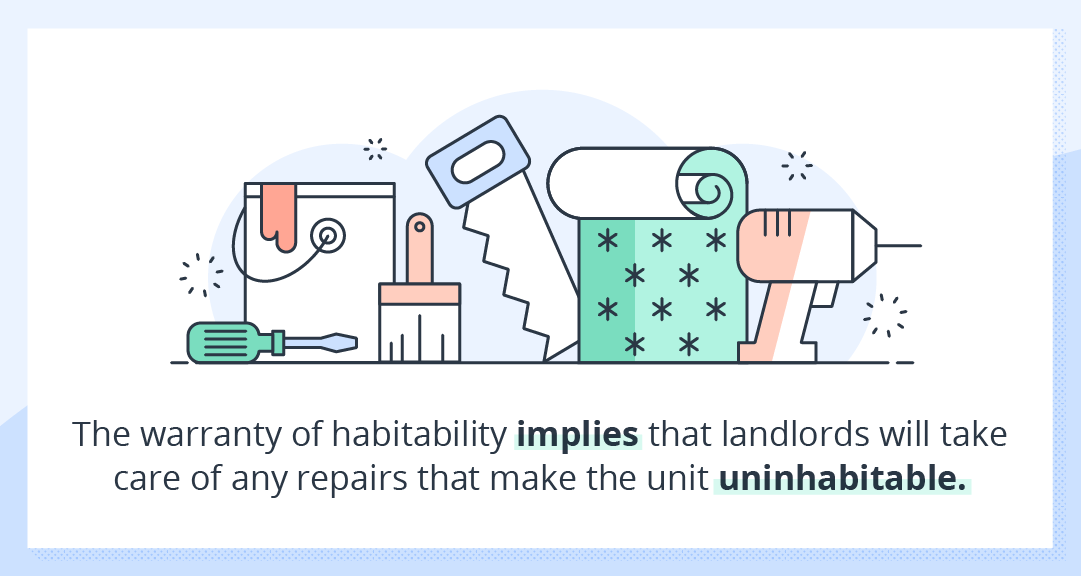
The warranty of habitability is similar to the covenant of quiet enjoyment in that it is an implied legal provision in a lease. This means that although the lease may not detail each and every repair specifically, it is assumed in a legal sense that landlords will and must make repairs to ensure the unit remains habitable. In order to determine if a unit is habitable or inhabitable, it’s important to understand the differences between critical and non-critical repairs. We’ve included several examples of each below, along with their general repair timelines.
Critical repairs violate the warranty of habitability by making the unit unlivable. Therefore landlords must fix these repairs in a timely manner and are typically given three to seven days to resolve the issue. If a repair is non-critical and therefore does not violate the warranty of habitability, landlords typically have up to 30 days to resolve the issue.
Again, it’s very important to understand that each state has different laws that specifically apply to repair timelines. Landlord-tenant law is not necessarily the same in Florida as it is in Texas, or in any other U.S. state.
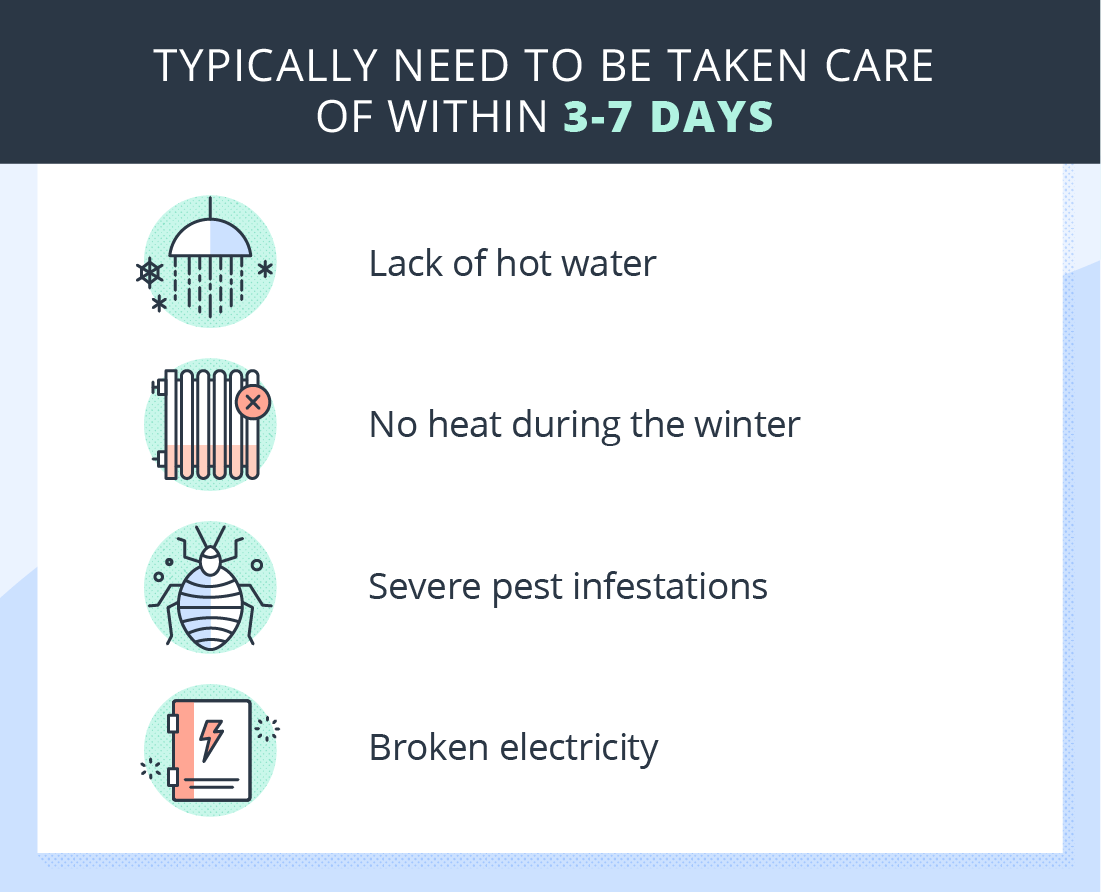
As previously mentioned, critical repairs are major issues that would make living in the unit impossible, very difficult, or dangerous. These include problems such as:
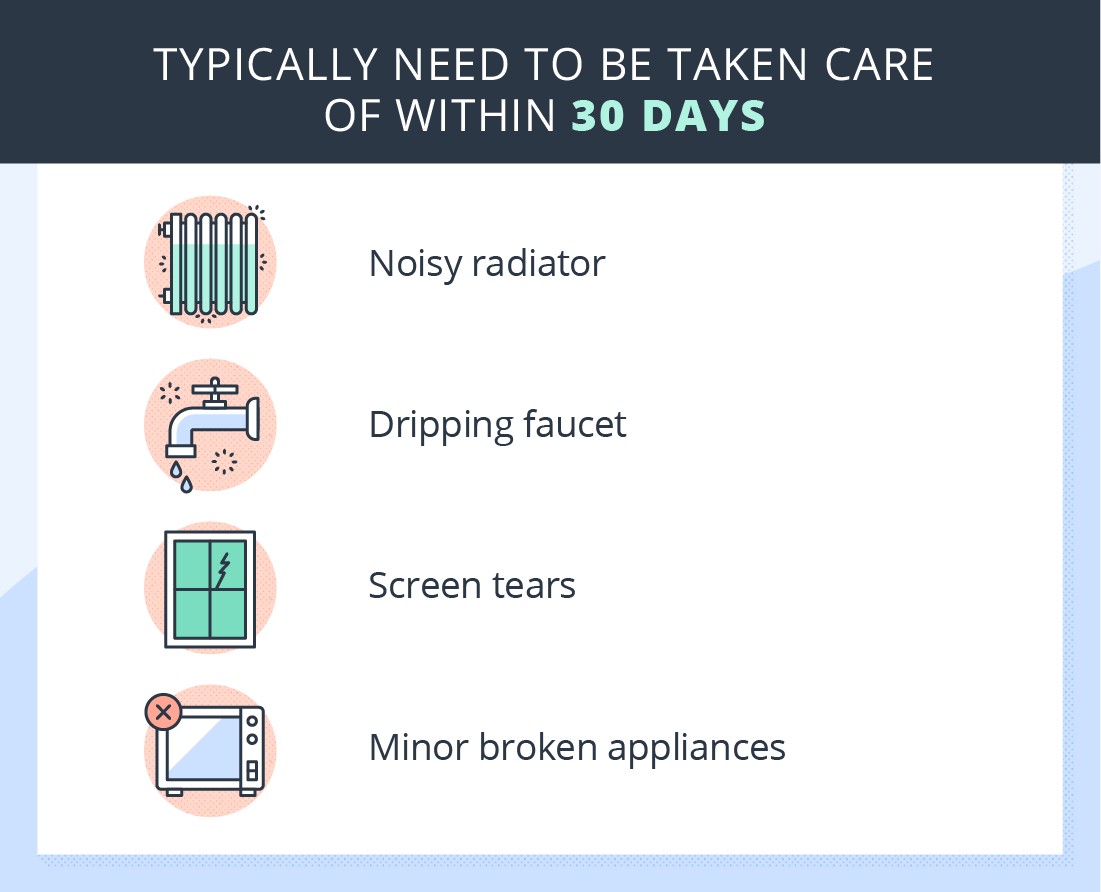
These maintenance issues might be frustrating but they do not make living in the unit impossible or unsafe, so landlords have a longer time to resolve them. These types of problems include:
Repairs can get trickier when it’s not clear who’s responsible for damaging the item in the first place. Here are some examples that can help clear up these types of situations.
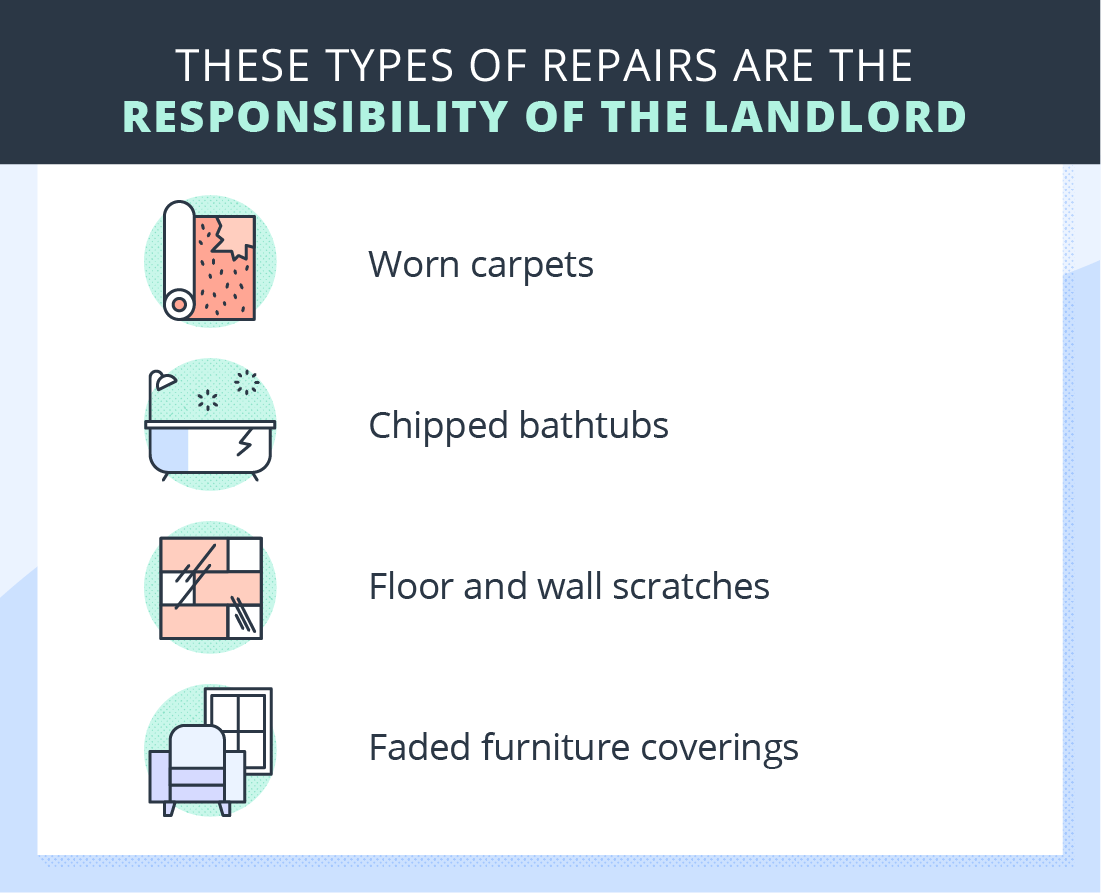
An important distinction for both landlords and tenants to understand is the concept of normal wear and tear. Apartment furniture and structures will naturally wear out with use over time, and these types of issues are the responsibility of the property owner or landlord to fix. These are most often non-critical repairs.
Examples of normal wear and tear landlords can expect to see include:
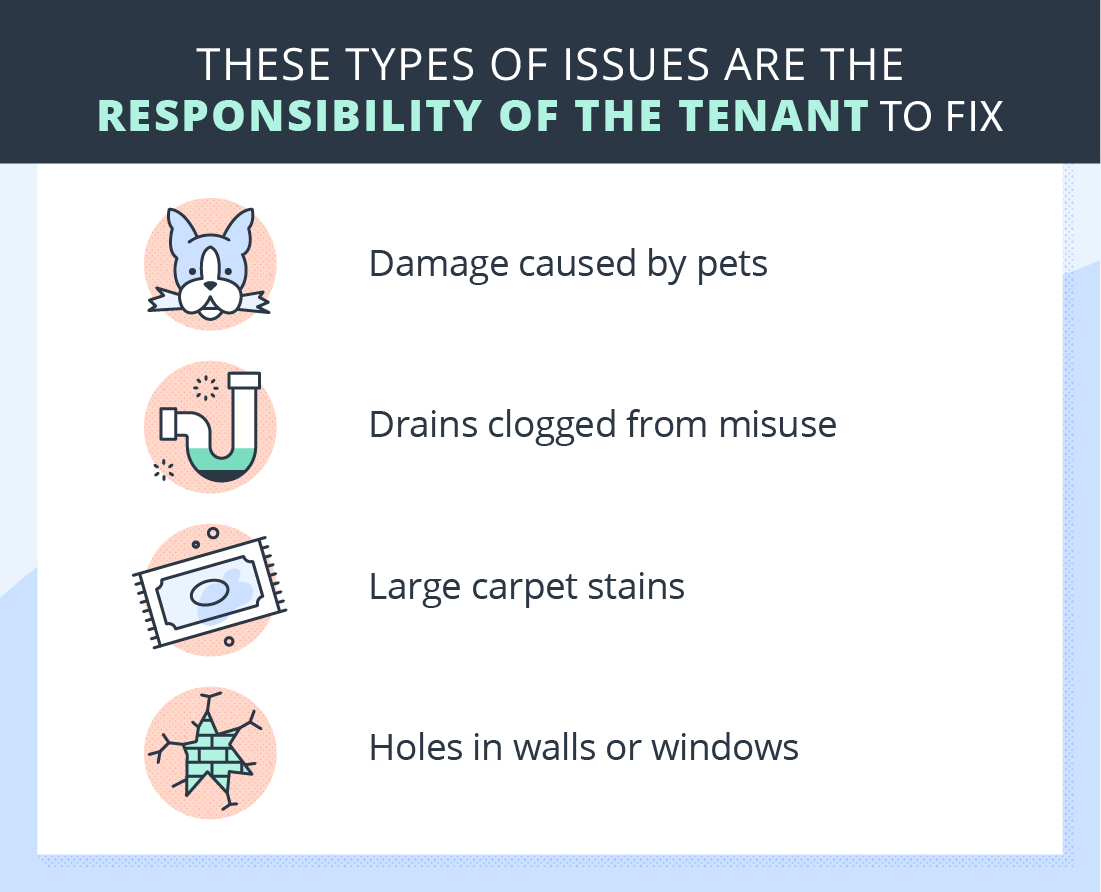
Though tenants are not responsible for normal wear and tear damages, they will need to repair and pay for issues that they cause. Whether it’s neglecting an on-going issue until it becomes critical or actively damaging the unit, below are a handful of examples of tenant-caused repairs. Landlords should be sure to keep records of move-in and move-out inspections in order to track tenant damages vs normal wear and tear. Here are some examples of repairs tenants would be responsible for:
In the case that a tenant damages your rental, you will need to write a letter to a tenant for damages when some or all of their security deposit will not be returned. Get a Letter to Tenant for Damages here.
If a tenant finds themselves in this unfortunate situation, there are steps they can take to try to force a landlord to abide by the warranty of habitability.
If you’re considering any of the courses of action above, it’s best to consult with a lawyer ahead of time to make sure you are understanding your state’s landlord-tenant laws properly.
Hopefully, things never need to progress to reporting a landlord or bringing the case to court. It is really in landlords’ best interests to fix both critical and non-critical repairs promptly, for a number of reasons:
We hope these generalized repair terms and definitions help both tenants and landlords understand the requirements expected of both of them when it comes to timelines for critical and non-critical repairs.
DISCLAIMER: TurboTenant, Inc. does not provide legal advice. This material has been prepared for informational purposes only. All users are advised to check all applicable local, state, and federal laws and consult legal counsel should questions arise.
12 min read
Creative financing can offer real estate investors options beyond traditional lending from banks. If you have less-than-ideal credit or lack a sizeable...
11 min read
If you came here wondering how to write a lease agreement, look no further. Creating iron-clad rental contracts is essential for protecting the rights...
10 min read
Between the risks of running a business, a volatile and ever-changing real estate market, and the sometimes fickle attitudes of the renting...
Join the 700,000+ independent landlords who rely on TurboTenant to create welcoming rental experiences.
No tricks or trials to worry about. So what’s the harm? Try it today!
TurboTenant, Inc., © 2025
Created in Sunny Colorado